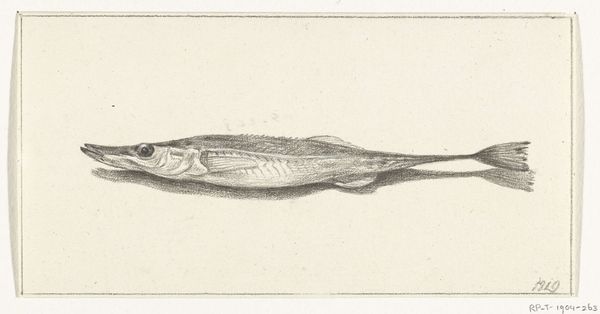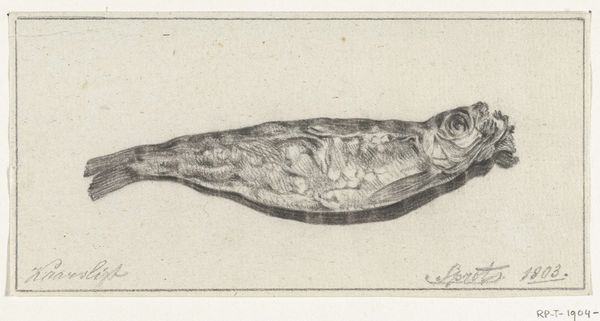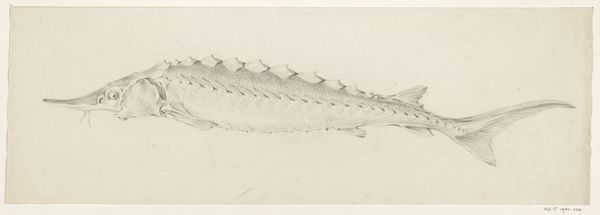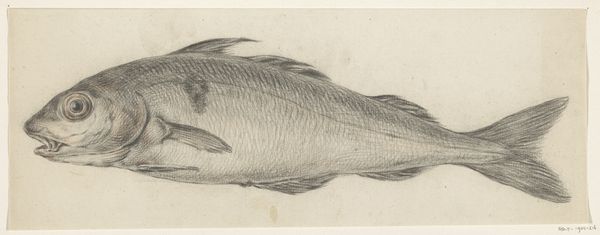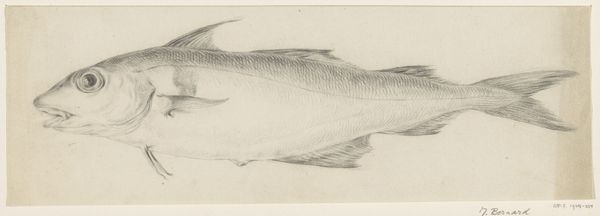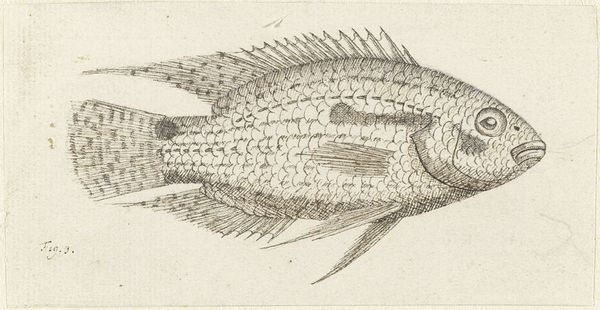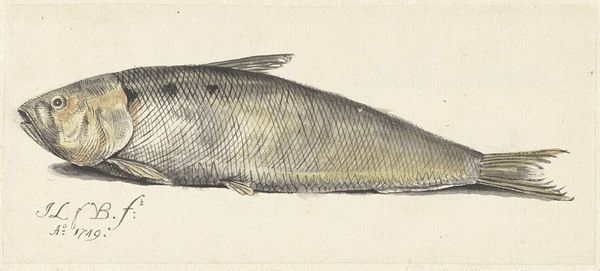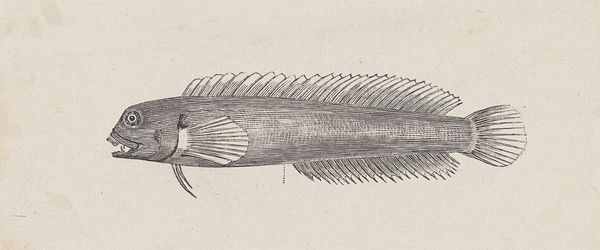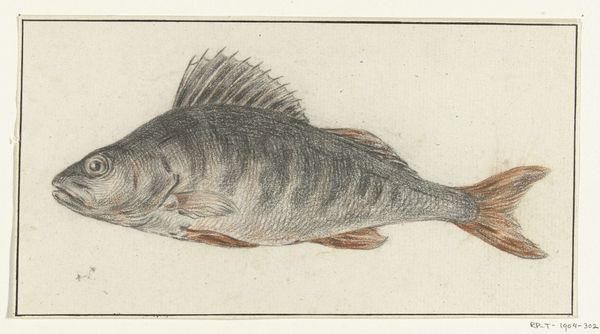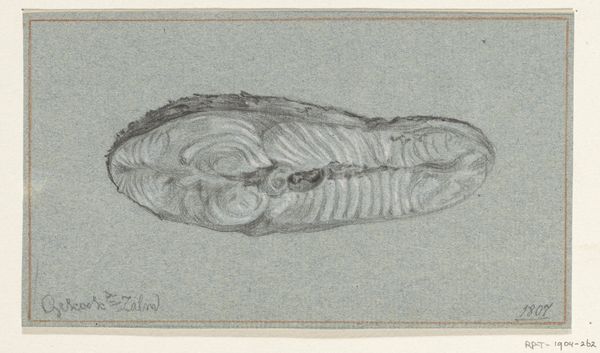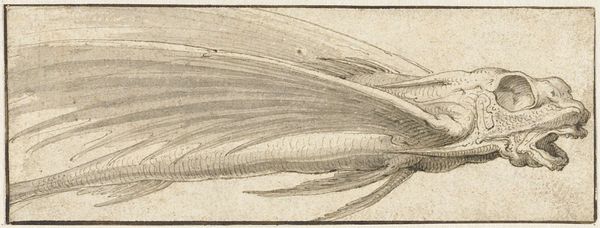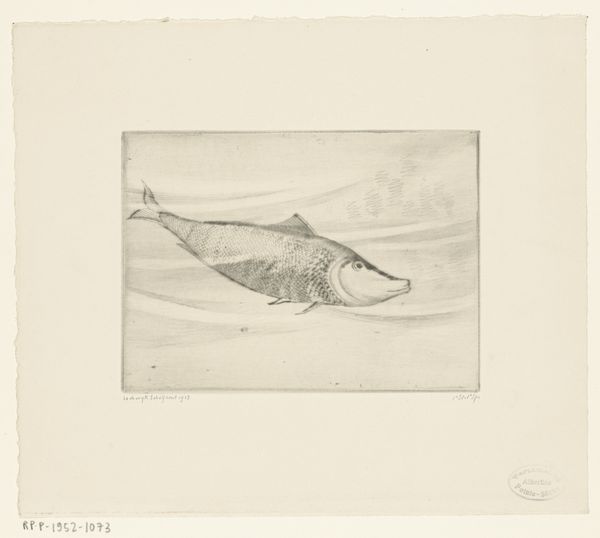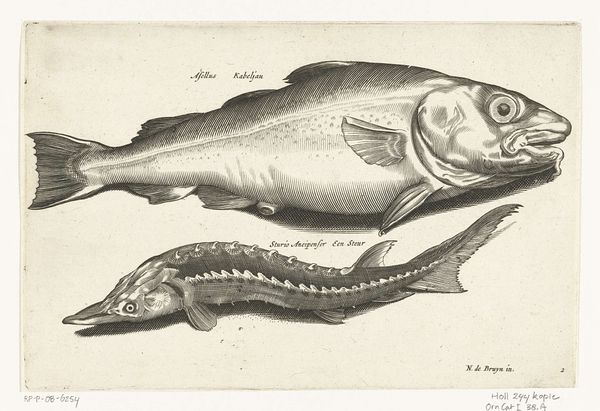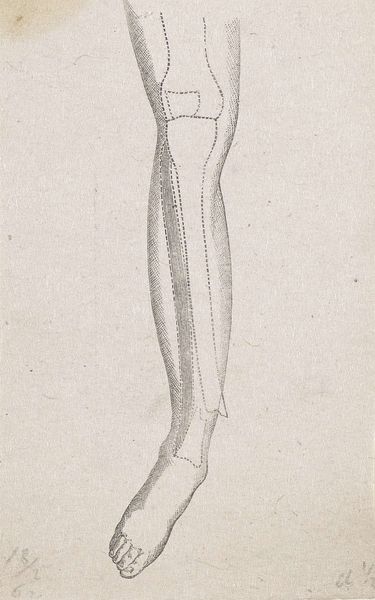
drawing, pencil
#
drawing
#
light pencil work
#
quirky sketch
#
pencil sketch
#
old engraving style
#
figuration
#
personal sketchbook
#
idea generation sketch
#
ink drawing experimentation
#
pen-ink sketch
#
pencil
#
line
#
sketchbook drawing
#
academic-art
#
realism
#
initial sketch
Dimensions: height 75 mm, width 162 mm
Copyright: Rijks Museum: Open Domain
Curator: Here we have "Vis," a pencil drawing completed in 1819 by Jean Bernard, part of the Rijksmuseum collection. Editor: It strikes me as a study, almost like a page torn from a naturalist’s notebook. There's a delicacy in the linework and the light touch with the pencil. Curator: Indeed, it possesses that scientific, observant quality so characteristic of the period. Thinkers were fascinated with categorizing the natural world. Do you find any symbolic weight to a fish as an iconographic motif? Editor: For me, it is far less about symbolism, and far more about the physical object: the grade of the pencil, the type of paper. It all points to the context of artistic training, the access to materials…consider the socio-economic conditions that permitted Bernard to dedicate his time and resources to observing a fish with such precision. Curator: An excellent point. Before large-scale reproduction, the hand-drawn image played a vital role in knowledge dissemination. Beyond its materiality, though, don't you find echoes of the fish as a traditional symbol for Christ in its silent, observing presence? Think of early Christian iconography. Editor: While I recognize the traditional Christian associations, the real symbolism I perceive relates to the power and place from which to create and document. The act of drawing—the access to and consumption of material things—speaks of wealth and influence. How was Bernard patronized; who bought this drawing? What happened to it after he was done drawing? Curator: Fascinating questions that open up the historical and economic contexts… The drawing also sparks thoughts of the changing symbolism attributed to the natural world. During the Enlightenment, there was growing awe in observation. This shift impacted so many people who had historically been marginalized. Editor: True! Its value is so much more complex than simply being the fish figure we see on the surface. Understanding the means of this work’s production as deeply influences how one views it, how it's received by its audience today. It's like unlocking a cultural history. Curator: Absolutely. I see layers of social implications in one slender pencil drawing now! Editor: And I see a quiet challenge to the art market, asking to be valued as material, not merely spiritual expression.
Comments
No comments
Be the first to comment and join the conversation on the ultimate creative platform.
